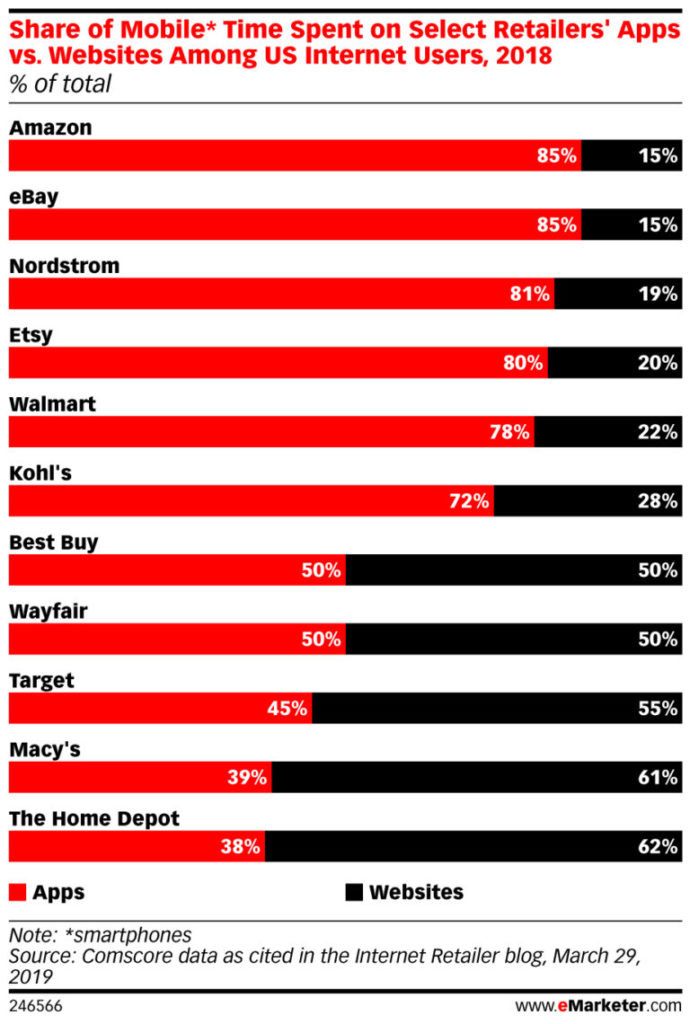
2 common web-to-app use cases for People-Based Attribution

While mobile is on the rise, web is certainly not dead. Alongside the convenience of having the whole world in your pocket, on your watch or on your TV, both desktop and mobile web still play a significant role in the customer journey.
Web is still the most comprehensive platform for brand discovery, research and the decision making process on the whole. For businesses employing a cross-platform marketing strategy, it is quite common to have customers begin their journey on the web and eventually transition to the native app for actual conversion-related activity.
On the marketers’ side, this presents both benefits and challenges; driving paid traffic to a website is typically cheaper than paid app download campaigns. It is more cost-effective to deliver high-quality, relevant traffic to the website.
At the same time, native app usage encourages brand loyalty and has shown to drive higher conversion rates and sales than web.
So how can marketers consolidate these facts to capitalize on the combined benefits of both web and app?
Let’s explore a couple classic use cases across verticals.
Use Case #1: Connecting the dots in eCommerce
eCommerce is one of the fastest-growing industries in the world, with roughly 20% YoY growth in sales. Alongside the explosive growth, however, retailers are facing new challenges.
eCommerce customers bounce back and forth between online platforms, such as desktop web, mobile web, and app; what’s more, customers may mix offline (in-store) and online engagement as well, such as using their phones when inside a store to look up product reviews or compare prices.
Retailers are tasked with attempting to connect the dots between offline and online, as well as mapping out the online cross-device and cross-platform journey.
The case for pushing customers to the brand’s native app is strong: 67% of all eCommerce purchases are predicted to occur on mobile in 2020 (and that figure is likely to be even higher in light of the coronavirus lockdowns). What’s more, the conversion rate for native shopping apps is 3X higher compared to mobile web.

At the same time, web is a strong platform for discovery and research, and a significantly cheaper one to advertise on. Tools for buying, managing and optimizing web ads are already well-established and many brands have been investing in web campaigns for years.
eCommerce marketers need to create an omni-channel retail strategy that provides shoppers with a fully-integrated shopping experience, by unifying measurement and user experiences from brick-and-mortar to mobile-browsing, in-app purchasing and everything in between. There is a clear benefit to driving users to make purchases in the native app, and a solid marketing strategy should aim for this goal.
Solution: People-based attribution can help paint the full web-to-app picture, attributing native app installs to web visits and the initial media sources that referred them.
With mobile web banners driving web visitors to download the app (perhaps with the incentive of an enticing offer), marketers can increase conversions, revenue, and brand loyalty.
Use Case #2: Driving seamless on-boarding for banking apps
They may have been a bit late to the digital revolution party, but finance and banking have become some of the fastest growing mobile industries.
User activity on finance apps has shot up 354% in the last 5 years, and mobile is expected to soon become the #1 preferred channel for users to manage their accounts. Interestingly, one of the top reasons mobile banking users prefer apps over desktop or in-store service is the enhanced personalization they offer.
When we think about finance apps, we think in the context of two main categories:
- Mobile-first fintech apps, such as those that offer peer-to-peer payments or virtual wallets
- Banking apps that are historically brick-and-mortar or web-based entities, that provide users additional access options via mobile apps
Web-to-app journeys are more relevant for the second category, where the app is a complementary part of the offering. In these cases, customers are only granted app access after they have already established themselves as customers, created an account or signed up for a service.
Apps provide banking organizations with the opportunity to create a stellar, smooth user experience, tailored to their customers needs and usage patterns. This is much harder to do in mobile web, where customization options are limited.
On the development side, the organization is tasked with maintaining strict security and privacy practices both in the mobile software and in any 3rd-party vendors employed.
These apps have proven to be a good tool for retention, information and upsell. If the organization is capable of tying together the web and app journeys, correctly attributing app installs to web visits and activity, they not only gain opportunities for well-timed offers and benefits, but also for improving user experience and personalization.
Solution: Tying together the journey from web to app via secure onboarding process with a private and secure end-to-end solution. With customers only visiting the app once they have established a relationship with the brand, banking apps have a unique opportunity to capitalize on the user experience and loyalty by driving them to well-designed, UX-centric apps.
Ensuring the smooth transition from one platform to the other, where the user identity is maintained and recognized, banking apps can drive upsells and retention easily.
Web-to-app or web and app
The story doesn’t end with eCommerce and finance apps – not even close.
Businesses across almost every industry experience similar issues. Whenever any brand is utilizing multiple marketing properties, measurement and attribution becomes a challenge.
Whether the goal is to drive users to the native app or just to maintain a cohesive user experience across all properties, a full-stack marketing solution can help take the guesswork and extrapolation out of the game.




